Setra Systems 267 Operating instructions
- Type
- Operating instructions
This manual is also suitable for
Setra Systems 267 is a differential or gauge pressure transducer that converts pressure difference to a proportional high-level analog output for both unidirectional and bidirectional pressure ranges. Two output versions are offered: A configurable voltage output of 0 to 5 VDC or 0 to 10 VDC and a current output of 4 to 20 mA. 267 is designed to be used with air and non-conducting gases. It has a 3-wire circuit, with three terminals available for wiring. The excitation/output specifications are: Excitation 9 to 30 VAC/ 11.
Setra Systems 267 is a differential or gauge pressure transducer that converts pressure difference to a proportional high-level analog output for both unidirectional and bidirectional pressure ranges. Two output versions are offered: A configurable voltage output of 0 to 5 VDC or 0 to 10 VDC and a current output of 4 to 20 mA. 267 is designed to be used with air and non-conducting gases. It has a 3-wire circuit, with three terminals available for wiring. The excitation/output specifications are: Excitation 9 to 30 VAC/ 11.












-
 1
1
-
 2
2
-
 3
3
-
 4
4
-
 5
5
-
 6
6
-
 7
7
-
 8
8
-
 9
9
-
 10
10
-
 11
11
-
 12
12
Setra Systems 267 Operating instructions
- Type
- Operating instructions
- This manual is also suitable for
Setra Systems 267 is a differential or gauge pressure transducer that converts pressure difference to a proportional high-level analog output for both unidirectional and bidirectional pressure ranges. Two output versions are offered: A configurable voltage output of 0 to 5 VDC or 0 to 10 VDC and a current output of 4 to 20 mA. 267 is designed to be used with air and non-conducting gases. It has a 3-wire circuit, with three terminals available for wiring. The excitation/output specifications are: Excitation 9 to 30 VAC/ 11.
Ask a question and I''ll find the answer in the document
Finding information in a document is now easier with AI
Related papers
-
 Setra Systems 276 Operating instructions
Setra Systems 276 Operating instructions
-
 Setra Systems 256 Operating instructions
Setra Systems 256 Operating instructions
-
 Setra Systems 205 Operating instructions
Setra Systems 205 Operating instructions
-
 Setra Systems 278 Operating instructions
Setra Systems 278 Operating instructions
-
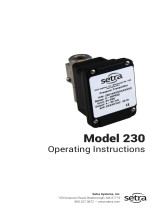 Setra Systems 230 Differential Water Pressure Transducer Operating instructions
Setra Systems 230 Differential Water Pressure Transducer Operating instructions
-
 Setra Systems 270 Operating instructions
Setra Systems 270 Operating instructions
-
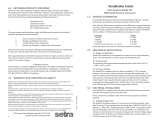 Setra Systems 265 Operating instructions
Setra Systems 265 Operating instructions
-
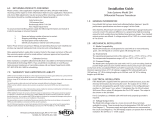 Setra Systems 264 Differential Pressure Transducer Operating instructions
Setra Systems 264 Differential Pressure Transducer Operating instructions
-
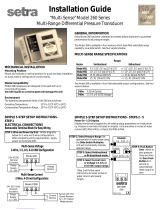 Setra Systems MS4 Installation guide
Setra Systems MS4 Installation guide
-
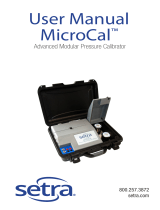 Setra Systems MicroCal™ Pressure Transducer Calibrator Operating instructions
Setra Systems MicroCal™ Pressure Transducer Calibrator Operating instructions
Other documents
-
Omega PX5100 Series Owner's manual
-
Dwyer Series 679 User manual
-
Alpha 178 Installation guide
-
Omega PX5200 Series Owner's manual
-
Vishay PS-1020 Installation guide
-
Dwyer Series MS2 User manual
-
Dwyer MSX Pro Series User manual
-
Hyundai N800A Installation guide
-
Craftsman Folding Framer User manual
-
3M MR3 User manual





















